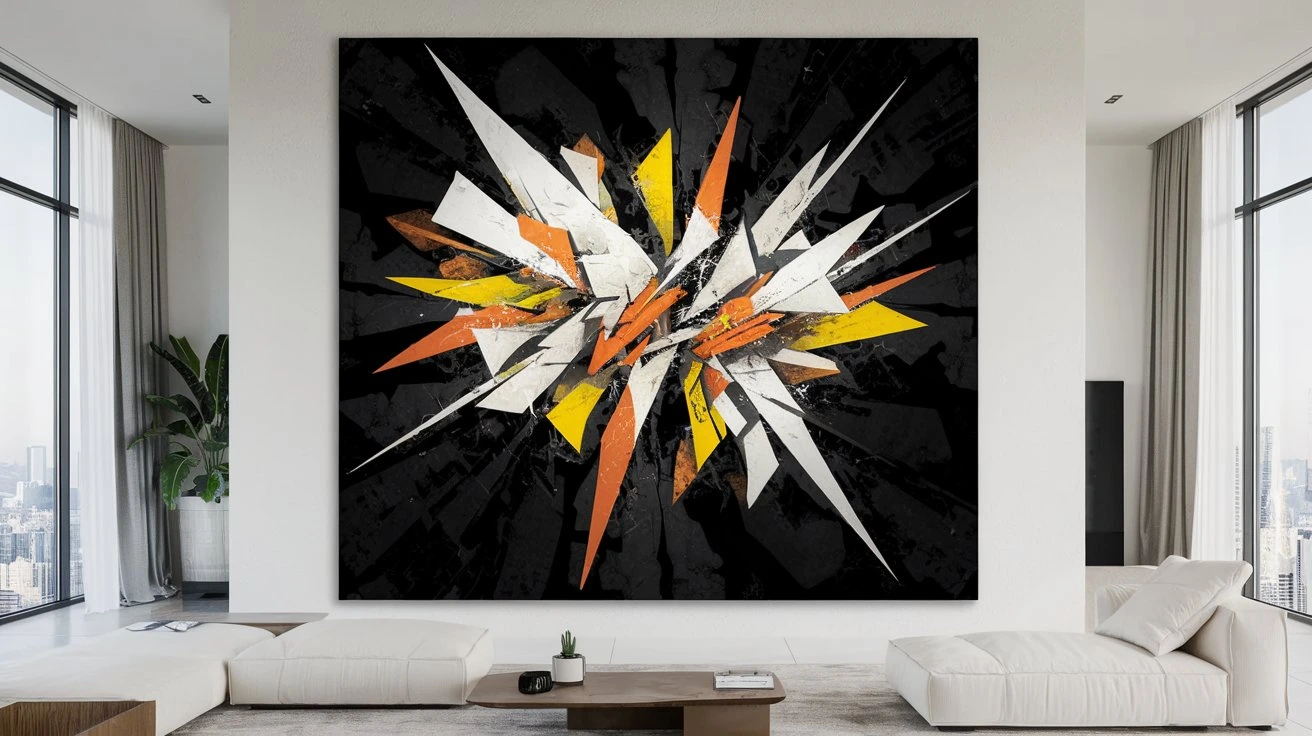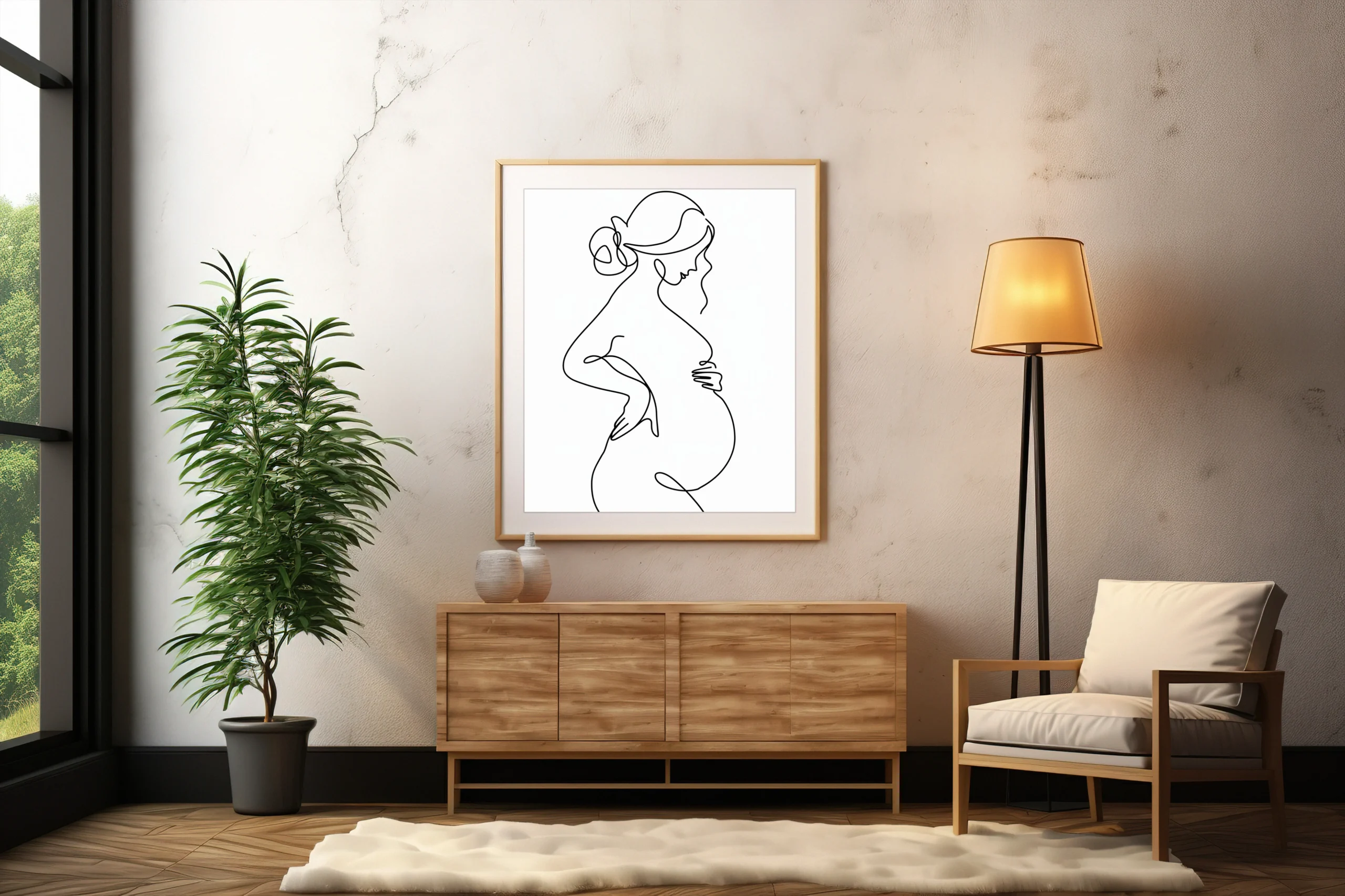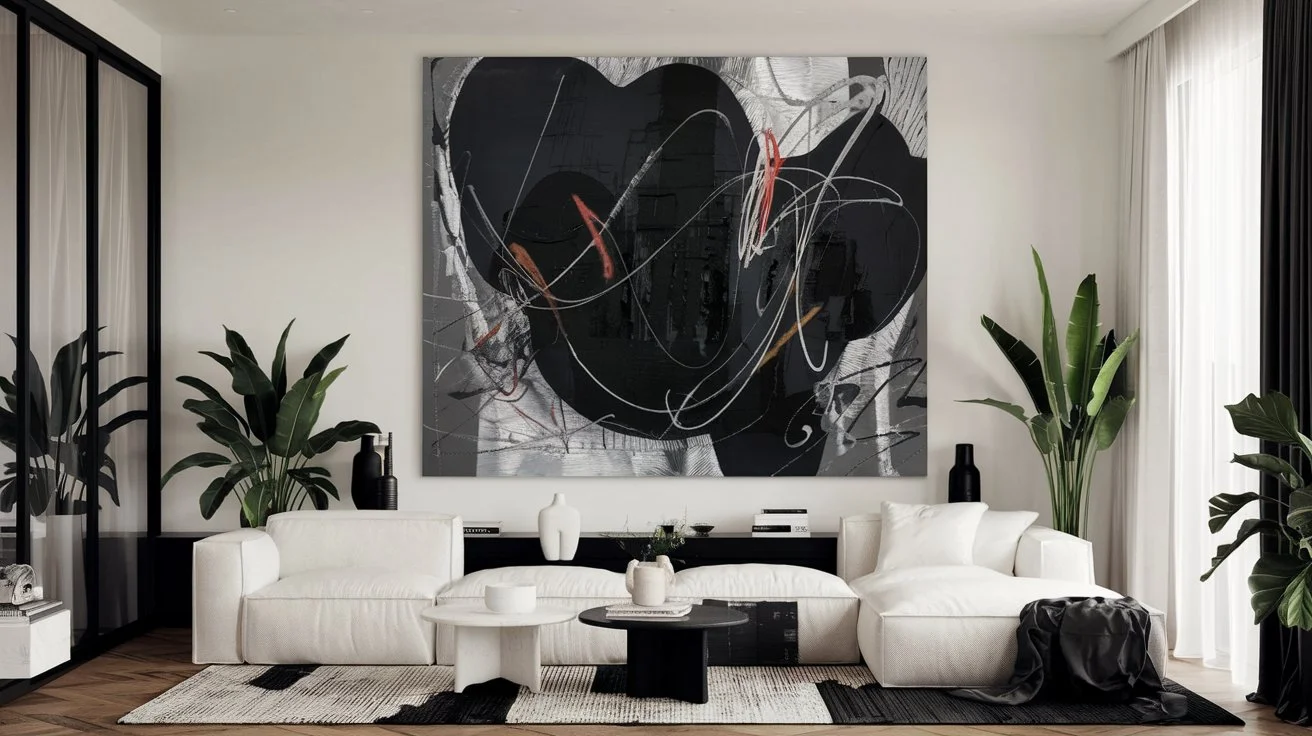The Allure of Black in Abstract Art
Imagine standing in a gallery, surrounded by vibrant colors and striking forms, yet your gaze is irresistibly drawn to a deep black canvas. This piece, though seemingly simple, stirs something within you a rush of emotions, a sense of mystery, or perhaps a moment of introspection. Abstract art black holds a unique allure, inviting you to explore its depths and complexities. It’s not just a color; it’s a profound expression of the human experience.
Table of Contents
In this exploration of abstract art black, you’ll uncover how this color has shaped artistic expression, discover key artists who have utilized it masterfully, and learn about the various styles that celebrate the enigmatic power of black. By the end, you’ll gain a richer appreciation for how abstract art can resonate on personal and emotional levels, allowing you to connect with art in new and meaningful ways.
What is Abstract Art?
Abstract art represents a departure from the conventional representation of physical objects. It focuses instead on the elements of art color, form, line, and texture to convey emotions and ideas without the constraints of realism. When you engage with abstract art, you enter a realm where your imagination takes precedence over traditional interpretations.

Key Characteristics of Abstract Art
- Non-representational Forms: Abstract art often doesn’t depict recognizable subjects, encouraging you to find your meaning within the forms.
- Emphasis on Color and Composition: Artists manipulate colors and shapes to elicit feelings rather than represent reality.
- Personal Interpretation: Each viewer brings their own experiences and emotions to the artwork, making each interaction unique.
Throughout the history of art, abstraction has played a pivotal role, allowing artists to break free from tradition and express the inexpressible.
The Significance of Abstract Art Black
Black holds a special significance in the world of Abstract Art Black. It’s a color that commands attention and invites contemplation. By understanding the roles that black plays in artistic expression, you can deepen your appreciation for its impact on the viewer’s experience.

Historical Context
The use of Abstract Art Black has evolved over centuries. In the early 20th century, movements like Cubism and Surrealism began to embrace abstraction, with black emerging as a vital component. Artists started using black not merely as a shadow or an absence of light but as a powerful presence that could evoke a spectrum of emotions.
Psychological Effects of Abstract Art Black
Psychologically, black can symbolize a range of feelings and ideas. It may evoke:
- Mystery and Intrigue: The depth of black invites curiosity and exploration.
- Elegance and Sophistication: Often associated with formality, black conveys a sense of refinement.
- Emotional Depth: Black can express feelings of sadness, introspection, or melancholy, providing a stark contrast to brighter colors.
Understanding these emotional connections enhances your ability to engage with abstract art that features black.
Key Artists Who Shaped Abstract Art Black
Many artists have made significant contributions to Abstract Art Black using black as a focal point. Here, you’ll discover a few key figures whose work exemplifies the power of this color.
Kazimir Malevich
Kazimir Malevich was a pioneer of Abstract Art Black and a key figure in the Suprematism movement. His work “Black Square” (1915) is often regarded as one of the most iconic pieces of modern art. Malevich believed that pure abstraction could convey profound spiritual meaning, and his use of black represents a break from tradition and a step towards a new artistic paradigm.
Mark Rothko
Mark Rothko’s contributions to Abstract Art Black are characterized by his color field paintings, where blocks of color create an emotional landscape. Rothko often used deep blacks alongside vibrant hues, allowing the black to intensify the emotional experience of his works. His paintings invite viewers to immerse themselves in the color fields, prompting reflection and introspection.
Franz Kline
Franz Kline is known for his dynamic black brush strokes that define the Abstract Expressionist movement. His works often feature bold, sweeping lines that create a sense of movement and energy. Kline’s use of black not only captures attention but also conveys a powerful emotional intensity, making his pieces captivating and memorable.
Ellsworth Kelly
Ellsworth Kelly’s minimalist approach to abstraction emphasizes simplicity and form. His use of black in works like “Black Form” demonstrates how a single color can create a profound visual impact. Kelly’s art invites you to consider the relationship between color, form, and space, encouraging a deeper engagement with the artwork.
Notable Styles of Abstract Art Featuring Black
In addition to individual artists, various styles of abstract art celebrate the use of black in distinct ways. Understanding these styles can enhance your appreciation for how black shapes artistic expression.
Black and White Minimalism

Minimalism focuses on simplicity and the reduction of form. In black and white minimalism, the stark contrast between the two colors creates a striking visual impact. Artists often use geometric shapes and clean lines, allowing the viewer to appreciate the essential elements of design without distraction.
Abstract Expressionism
Black plays a crucial role in Abstract Expressionism, where artists express their emotions through spontaneous and gestural brushwork. The bold use of black can convey feelings of angst, power, or joy, depending on the context. Works by artists like Kline and Rothko exemplify how black can shape the emotional landscape of abstract expressionism.

Geometric Abstraction
In geometric abstraction, black often serves as a foundational element, providing depth and contrast to vibrant colors. Artists such as Piet Mondrian and Frank Stella have utilized black to create dynamic compositions that engage the viewer’s eye and stimulate visual interest.

Monochrome Painting
Monochrome painting, as the name suggests, focuses on a single color. Black monochrome works challenge the viewer’s perception of form and depth. Artists like Ad Reinhardt have pushed the boundaries of what black can convey, creating works that invite contemplation and introspection.

How to Appreciate Abstract Art Black
Engaging with abstract art, particularly pieces that prominently feature black, can be a rewarding experience. Here are some tips to help you appreciate these works fully:
Observe the Use of Black
Take a moment to focus on how black is used within the artwork. Notice its relationship with other colors and forms. Ask yourself:
- How does the black interact with surrounding elements?
- What emotions does it evoke in you?
- Does it create a sense of depth or flatness?
Reflect on Personal Feelings
Your emotional response to the artwork is crucial. Allow yourself to feel whatever comes up when you engage with the piece. Consider journaling about your thoughts and emotions as a way to deepen your understanding and connection.
Discuss Interpretations
Engage in discussions with friends or fellow art enthusiasts about your interpretations of abstract works. Sharing perspectives can provide new insights and enhance your appreciation of the art.
Visit Galleries and Museums
To experience abstract art firsthand, visit galleries and museums that feature contemporary and modern works. Take your time with each piece, allowing the black elements to resonate with you.
Frequently Asked Questions (FAQ)
What is the meaning of black in abstract art?
Black in abstract art symbolizes a range of meanings, from mystery and depth to emotional intensity. It can provoke thought and reflection, inviting viewers to explore their feelings and interpretations.
Who are the most famous abstract artists known for using black?
Some notable artists include Kazimir Malevich, Mark Rothko, Franz Kline, and Ellsworth Kelly. Each of these artists has made significant contributions to the use of black in abstract art, showcasing its power and versatility.
How can I start collecting abstract art that features black?
To start collecting, research local galleries and art fairs, and consider purchasing works from emerging artists. Online platforms like Artsy and Saatchi Art also offer a wide range of abstract pieces featuring black.
Why is abstract art important in contemporary culture?
Abstract art challenges traditional notions of representation and encourages viewers to engage with art on a personal level. It plays a vital role in expressing complex emotions and ideas, making it relevant in today’s cultural landscape.
Conclusion: The Enduring Impact of Black in Abstract Art
The journey through abstract art black reveals the profound emotional and psychological connections that this color can evoke. As you explore the works of influential artists and styles, you can develop a deeper appreciation for how black shapes artistic expression.
Let this exploration inspire you to engage with abstract art in new ways, allowing yourself to feel, reflect, and connect with the powerful emotions that this color can convey. Whether you’re visiting a gallery or contemplating a piece at home, remember that each encounter with abstract art is an opportunity for personal discovery.
